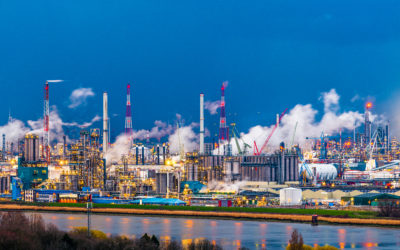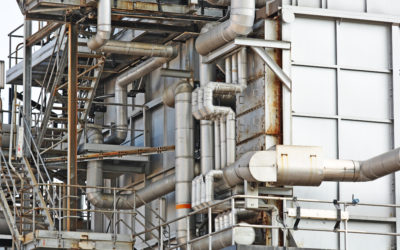Boosting Power Plant Efficiency: The Impact of Biofouling on Heat Exchangers
Heat exchangers are critical components in power plants, where they facilitate the transfer of heat between different fluids, playing an essential role in energy conversion processes. The efficiency of these devices is paramount for optimal plant performance, cost management, and environmental compliance. However, one of the most significant challenges to maintaining high efficiency in heat exchangers is biofouling. This article delves into how biofouling impacts power plant operations, increases costs, and contributes to higher emissions, and highlights the substantial gains that can be achieved by preventing biofouling in heat exchangers.
Understanding Heat Exchanger Efficiency
In power plants, heat exchangers are responsible for transferring heat from one medium, such as water from a nearby cooling source, to another, such as steam, without allowing the two to mix. This process is crucial for generating electricity, as it enables the efficient use of thermal energy. The efficiency of a heat exchanger is determined by its ability to transfer heat effectively; any reduction in this efficiency can have a cascading effect on the entire power generation process. A key factor that can degrade this efficiency is the buildup of unwanted substances on the surfaces of heat exchangers—a phenomenon known as fouling.
The Menace of Biofouling
Biofouling refers to the accumulation of microorganisms, algae, and other biological materials on surfaces exposed to water. In the context of heat exchangers, biofouling occurs when these biological substances adhere to the heat transfer surfaces, forming a layer that impedes the efficient flow of heat. The biofouling layer acts as an insulator, reducing the heat transfer rate and increasing the resistance to heat flow. This reduction in heat transfer efficiency means that more energy is required to achieve the same level of heat exchange, leading to decreased overall plant efficiency.
The impact of biofouling on heat exchangers is not merely a technical concern but has far-reaching implications for power plant operations, costs, and environmental performance. As biofouling progresses, it necessitates more frequent maintenance and cleaning to restore the efficiency of heat exchangers. These maintenance activities can be costly and time-consuming, leading to unscheduled downtime and reduced power output. Moreover, the additional energy required to overcome the inefficiencies caused by biofouling translates into higher fuel consumption, which in turn increases operational costs and greenhouse gas emissions.
Economic and Environmental Consequences
The economic impact of biofouling on power plants can be substantial. Increased fuel consumption directly raises operational costs, as plants must burn more fuel to generate the same amount of electricity. Furthermore, the need for frequent maintenance and potential unplanned shutdowns can disrupt power supply and incur significant financial penalties. In a highly competitive energy market, these costs can erode profit margins and reduce the competitiveness of affected plants.
From an environmental perspective, biofouling has serious implications. As heat exchanger efficiency declines, the plant’s carbon footprint increases due to higher fuel usage. This not only contributes to climate change but also affects a plant’s compliance with environmental regulations. Many regions impose strict limits on emissions, and failing to meet these standards can result in hefty fines or even operational restrictions. Thus, controlling biofouling is not just an operational necessity but also a key strategy for reducing environmental impact.
Preventing Biofouling: A Path to Significant Gains
Given the severe impacts of biofouling, power plants have a strong incentive to implement effective prevention strategies. Various methods are available to combat biofouling, including the use of chemical treatments, mechanical cleaning, and advanced filtration systems. One of the most effective approaches is the use of antifouling coatings that prevent the initial attachment of biological materials to the heat exchanger surfaces. These coatings can significantly reduce the rate of biofouling, extending the intervals between maintenance and minimizing the associated costs.
However, until now coatings have had a negative impact on the heat transfer capability of the treated substrate – effectively lessening the heat able to pass through. Enter HeatX: a new nanocomposite surface treatment that enhances heat exchanger performance and yields substantial long-term benefits, including lower operational costs, reduced emissions, and improved plant reliability, without the insulating effects of traditional epoxies.
HeatX is a functionalized surface treatment with hydrophobic and oleophobic properties (high water and oil repellency). The water-based treatment can be applied to a variety of form factors including the interior of tubulars in both straight & U-tube and shell & tube configurations, as well as plate & frame heat exchangers. The unique surface properties of HeatX offer extremely low adhesion strengths to both water- and oil-based materials, resulting in drag reduction and improved fluid flow.
Biofouling in heat exchangers presents a formidable challenge to power plant efficiency, with significant repercussions for operational costs and environmental sustainability. By implementing a surface treatment like HeatX to mitigate biofouling, power plants can achieve massive gains in efficiency, reduce their carbon footprint, and maintain a competitive edge in the energy market. The key to unlocking these benefits lies in HeatX’s advanced nanocomposite make-up. To learn more, drop us an email by clicking the link below.



